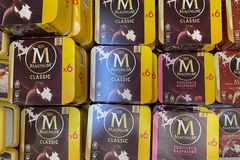
- Industry news
Industry news
- Category news
Category news
- Reports
- Key trends
- Multimedia
- Journal
- Events
- Suppliers
- Home
- Industry news
Industry news
- Category news
Category news
- Reports
- Key trends
- Multimedia
- Events
- Suppliers
Processed Cheese – Tackling the cost/efficiency issue

Prices for bulk cheeses and caseinates are very likely to remain high in the future as cheese consumption grows by 2-3% yearly and that European Community authorities keep on cutting subsidies for the production of caseinates.
08/02/06 Processed cheese using real cheese as raw material as well as imitation cheese based on caseinate or vegetable proteins are still top-positioned on consumers’ shopping lists; they are now also increasingly used as ingredients by the food industry.
Prices for bulk cheeses and caseinates are very likely to remain high in the future as cheese consumption grows by 2-3% yearly and that European Community authorities keep on cutting subsidies for the production of caseinates. This high raw material cost is squeezing processed cheese manufacturers who simultaneously have to deal with constant requests for cost savings from convenience and fast food businesses.

Cost factors
Costs factors in processed cheese are primarily Total Solids (TS) levels, particularly Casein (Cn) content. The final texture and functional properties of cheese (slicing, shredding and melting) depend on the combination of:
a) Raw materials: Cheese characteristics
b) Recipe: TS, Fat/TS, [Casein], pH, emulsifying salts
c) Process: Creaming, filling temperature
d) Stabilizer
Decades of cheese makers’ experience, combined with continuous improvement of equipment designed to control creaming reaction, have enabled the industry to reach minimum casein and cheese content in recipes. But pushing the limits quickly results in drastic variations of texture and functional properties. Dairy applications experts at Texturant Systems (Degussa Food Ingredients) have screened their broad range of carrageenans in their dedicated pilot plant, in order to evaluate their potentialities for TS reduction ; it became rapidly obvious that the behavior of carrageenan in water and in cheese mix is largely different. Particularly, high gelling carrageenans in water or brine, widely used by the meat industry, are by far not the most efficient ones in processed cheese application. More complex carrageenans recovered by alcohol extraction exhibit a better performance in terms of texturation and enable the largest TS reduction.
Block processed cheese – Stabilizer 0.7%
Texturant Systems’ dairy experts also observed that block and spread processed cheese called for specific carrageenans. In blocks, higher gel strength is favored whereas in spreads, viscosity and thixotropy are critical. In-depth studies and trials about process and formulations carried out in the Company’s dedicated dairy pilot plant as well as with processed cheese manufacturers emphasized the importance of viscosity and flowing properties of cheese mix at filling temperature (75°C - 85°C) on processed cheese wrapping abilities.
The textural characteristics of cheese mix are critical especially for aluminum foil wrapped cheese portions. Traditionally, the viscosity at filling temperature is driven by creaming reaction, which is strongly influenced by raw materials and process. Carrageenans and blends help to master this variability, keeping cheese viscosity within suitable limits for packaging while allowing attractive cost savings in cheese recipes.
Block processed cheese TS can typically be reduced by 2-4% from 53% down to 49% TS by using
0.5 to 1.25% of Satiagel ACH series from Texturant Systems.
Spread savings
For spreads, savings are even more impressive : a 4-5 % TS reduction can be reached with the same amount of carrageenan.
The specific carrageenan-based SatiagelÔ ACH series, combined with other gums, provides more flexibility in terms of cost savings and orientation of functional properties. Texturant Systems’ dairy experts have therefore developed the Lygomme ACH blends series to improve slicing/shredding, spreading and melting processed cheese capabilities.
Having achieved this, the next target for Texturant Systems’ experts is imitation cheeses, an application segment even more price sensitive, with a special focus on caseinate replacement and use of vegetable fat and oils.










